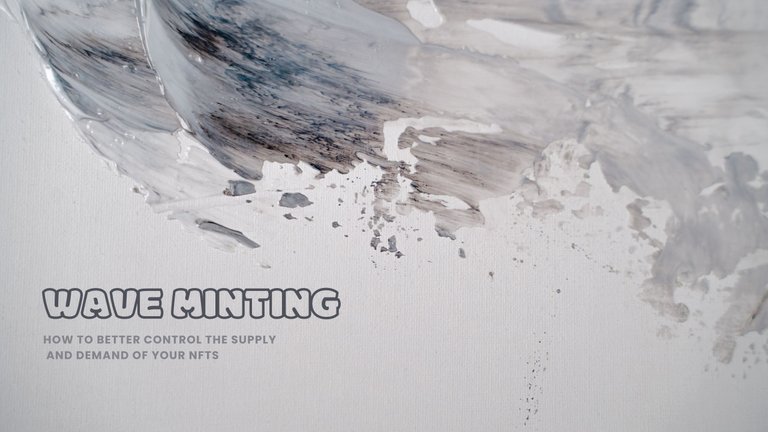
When I was a child, I had a friend who was very good at drawing; I admired his talent, mainly because I was never good at painting. When we talked about the future, I was convinced I would have my own company, and he was confident he would be a famous artist.
He was looking for opportunities to exhibit in galleries and did so on a few occasions, but the truth is that his career was a bit stagnant until the NFTs crossed the red carpet on the blockchain.
We had talked several times about blockchain technology's opportunities, but he refused to admit it. I remember the first time he minted and sold a piece; he called me excitedly and said: You were right. I just sold my first NFT, and it was a success.
Wave Minting: The icing on the cake
My friend continued his journey as an artist in the NFT market with an average profile until an innovative twist allowed him to maximize his value and demand; wave minting was a game changer for his art and life.
Have you heard of it, and have you ever used it?
Wave minting is a process that allows artists to release and sell their work in several stages or "waves" rather than all at once. This means you can create and sell NFTs in batches, allowing you to control supply and demand better.
For example, an artist might decide to release a series of 10 pieces of art, but instead of putting them all up for sale simultaneously, they might choose to sell them in three different waves, releasing a limited number of pieces in each.
It's simple.
The process is pretty straightforward. First, you create a smart contract that defines the characteristics of your NFT, such as its name, description, image, and total quantity.
Then, you use an NFT creation service to create the tokens and upload them to an NFT marketplace platform. For wave minting, you can choose how many tokens you want to make and how long you want to wait between waves.
But what are the advantages of this method? Let's see.
Advantages of Wave Minting
1. Sense of Urgency and Exclusivity: By limiting the number of NFTs available in each wave, artists can create a sense of urgency and exclusivity. This can increase demand and, ultimately, the value of the work. Collectors and fans may be more inclined to buy if they feel the opportunity is limited.
2. Avoid Network Overload: The Ethereum network, where most NFTs are created and sold, can become overloaded when developing and selling too many NFTs simultaneously. Wave minting can help artists avoid this problem by spreading the load over time.
3. Control Supply and Demand: By releasing their works in waves, artists can better control the supply and demand of their NFTs. This allows them to adjust the number of pieces available in each wave based on market demand.
On the other hand, Wave Minting has also become a powerful solution for communities of artists who identify with the goals and values of a project. But that's another matter, so I'll leave it for another post.😉
Game changer for artists
We are aware that the development and adoption of blockchain, in turn, enables the creation of new methods, techniques, and technologies that facilitate creation at all its edges.
Like my friend, I know that other artists have taken advantage of approaches like Wave Minting. While the process may seem more complex than traditional NFT launching, the potential benefits make it worth considering.
If you're an artist or an NFT enthusiast, you should check it out! And if you have, you can tell me about your experience with it.⌨️💬
